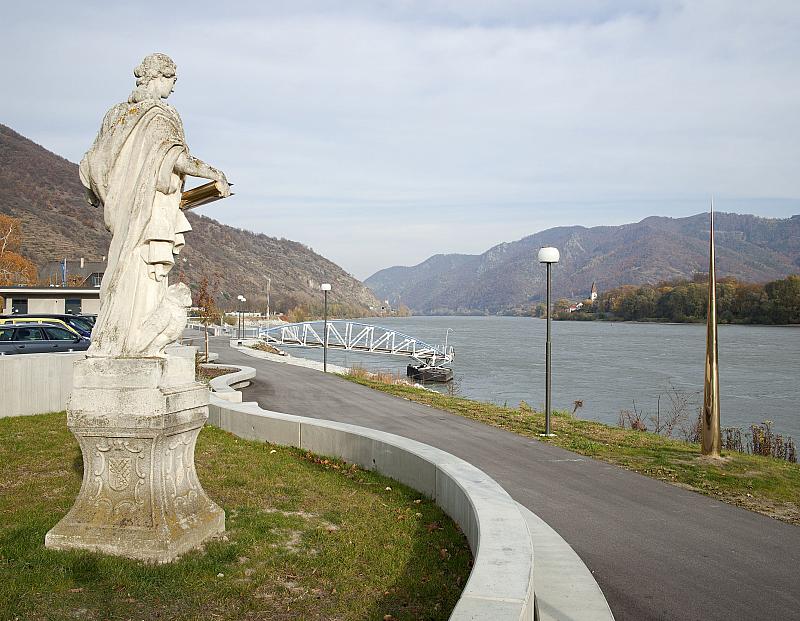gottfried bechtold
spitz
Analysis, experimentation, intervention – these are the three concepts on which Gottfried Bechtold’s artistic work is based. He describes his method as "the attempt to create a new configuration between materiality and information in the form of a new alloy." Bechtold’s public art installations are the result of the close observation and evaluation of site-specific conditions and of the desire to create new site-specific contexts. For his project in Spitz – a multi-part sculpture located along the "Donaulände" (Danube embankment) – the artist chose again to refer to a site and its history. The work consists of a delicate cone structure made of bronze that is 4.45 meters tall, placed on the embankment of the Danube as a reminder of the river’s historic flood level. The old wine-growing village of Spitz in the Wachau region is nestled against the Danube amidst terraced vineyards. The late Gothic church and the Renaissance and Baroque houses bear witness to the centuries of wealth that the Danube has brought to the people of this region. At the same time, this force of nature could also take everything away again.
In his works for public space, Gottfried Bechtold places a special focus on the relationship between civilization and nature. In this context, the cone could be regarded as a metaphor hinting at how we treat nature, evoking associations with measuring instruments, markers in the landscape, or a stylized, larger-than-life blade of grass.
video / audio
>
plan


